By Lt. Col. Harold E. Raugh, Jr., Ph.D., U.S. Army (Ret.)
World War II German Army Field Marshal Erich von Manstein was considered by many to have been “Hitler’s most brilliant general” and “the ablest commander in their Army.” In Lost Victories (Zenith Press, St. Paul, MN, 2004, illustrations, maps, appendices, index, $19.95, softcover), Manstein’s autobiography originally published in 1959, the German field marshal chronicles his key role in numerous operations in Poland, France, and on the Eastern Front.
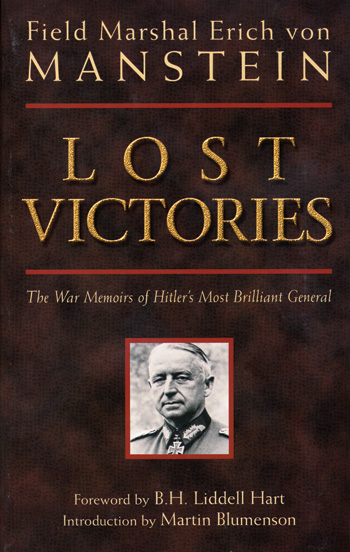 Manstein was chief of staff of the army group that conducted the unprecedented blitzkrieg into Poland in 1939. His unorthodox plan was executed during the 1940 invasion of France, where he commanded an infantry corps. During the 1941 incursion into the Soviet Union, Manstein initially commanded a panzer corps with spectacular success before being elevated to army command in late 1941.
Manstein was chief of staff of the army group that conducted the unprecedented blitzkrieg into Poland in 1939. His unorthodox plan was executed during the 1940 invasion of France, where he commanded an infantry corps. During the 1941 incursion into the Soviet Union, Manstein initially commanded a panzer corps with spectacular success before being elevated to army command in late 1941.
With remarkable audacity and initiative, Manstein planned and led the campaign that resulted in the capture of the Crimea, for which he was promoted to field marshal and received the coveted baton. Manstein’s abilities were further recognized by his appointment to command Army Group Don. He was directed to rescue the Sixth Army encircled at Stalingrad, which, against Hitler’s orders, he wanted to break out and link-up with his own relief force. Sixth Army commander Field Marshal Friedrich von Paulus refused Hitler’s order “to fight on to the end” and surrendered his army on February 1, 1943.
In the growing chaos of the Eastern Front, Manstein was made Army Group South commander, recapturing Kharkov and conducting a fighting withdrawal from southern Russia before being relieved by Hitler in March 1944.
In this riveting account, Manstein reveals the machinations of the German General Staff, Hitler’s interference in military operations and strategy, and the horrors of combat on the Eastern Front. Readers may question the sincerity of Manstein’s anti-Hitler diatribes and note the absence of information on his complicity in war crimes for which he was prosecuted, found guilty, and imprisoned. By its very nature, however, a memoir provides the perspectives of its author and supports his decisions.
Manstein’s Lost Victories is definitely one of the more interesting and informative German autobiographies to emerge from World War II. New publisher Zenith Press is to be commended for republishing it.
Recent and Recommended
Other Clay: A Remembrance of the World War II Infantry, by Charles R. Cawthon, University of Nebraska Press, 2004, 180 pp., illustrations, maps, $15.95, softcover.
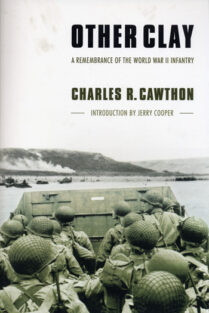 For an infantryman in the European Theater of Operations during World War II, “combat was a permanent assignment unless he was wounded or killed.” This candid, unpretentious, and elegantly written postwar autobiography was written by an experienced and articulate infantryman, Charles R. Cawthon. Cawthon, a journalist, joined the Virginia National Guard in 1940. He was assigned to the 2nd Battalion, 116th Infantry Regiment (the descendent unit of the “Stonewall Brigade ”of Civil War fame), 29th Infantry Division. Cawthon chronicles the unit’s mobilization in February 1941, training in the United States though September 1942, then deployment to England for additional training.
For an infantryman in the European Theater of Operations during World War II, “combat was a permanent assignment unless he was wounded or killed.” This candid, unpretentious, and elegantly written postwar autobiography was written by an experienced and articulate infantryman, Charles R. Cawthon. Cawthon, a journalist, joined the Virginia National Guard in 1940. He was assigned to the 2nd Battalion, 116th Infantry Regiment (the descendent unit of the “Stonewall Brigade ”of Civil War fame), 29th Infantry Division. Cawthon chronicles the unit’s mobilization in February 1941, training in the United States though September 1942, then deployment to England for additional training.
The climax to the book (and probably to Cawthon’s life) was Cawthon’s battalion’s assault landing in the second wave at Omaha Beach on D-Day. Cawthon’s account of plunging into the emotional abyss and the reality of the “exploding horror” of struggling through the surf and a hail of steel to hit Omaha Beach is spectacular. The reader accompanies Cawthon through Normandy and the siege of Brest until he was seriously wounded in the fall of 1944, and recuperated in time to rejoin his regiment a few weeks before the end of the war. Cawthon recounts “the real war; it requires a deeper, more committed courage to fight and endure, and mocks the false heroics of film and fiction.” If a person can read only a single World War II memoir this year, this is the book to choose.
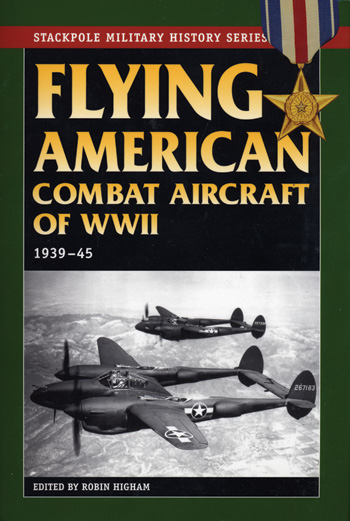 In Brief
In Brief
Flying American Aircraft of World War II, edited by Robin Higham, Stackpole Books, Mechanicsburg, PA, 2004, illustrations, index, $19.95, softcover.
Airpower tactics, strategy, and technology became increasingly effective and efficient during World War II, and American aircraft played a key role in the conflict’s outcome. In the late 1970s, noted aviation historian and former Royal Air Force pilot Robin Higham solicited flying accounts in various planes from fellow World War II combat aviators. Higham provided a checklist for contributors to use when writing their accounts, highlighting all aspects of the respective plane’s operations, “combat handling and idiosyncrasies,” and myriad other factors. This fascinating anthology consists of 29 riveting accounts. John V. Edmundson, who flew 107 combat missions and was credited with sinking one of the first Japanese submarines of the war, wrote “B-17 Flying Fortress.” “Pilots who have never flown a B-25 cannot realize the amazing flexibility of the bird,” observed Keith R. Matzinger, a B-25 Mitchell pilot in the Mediterranean in the chapter on that bomber. The distinctive, duel-fuselage P-38 Lightning, according to Royal D. Frey, who was shot down over Germany in February 1944, was “a real dream to fly.” Other accounts were provided by pilots of the P-26 Peashooter, Vultee BT-13A, B-24 Liberator, P-39 Airacobra, P-51 Mustang, CG-4A Glider, and others. These essays are informative, interesting, and frequently amusing, making this book an indispensable addition to the World War II aviation enthusiast’s library.
 The Royal Air Force in Texas: Training British Pilots in Terrell during World War II, by Tom Killebrew, University of North Texas Press, Denton, 2003, 182 pp., illustrations, appendices, bibliography, index, $26.95, hardcover.
The Royal Air Force in Texas: Training British Pilots in Terrell during World War II, by Tom Killebrew, University of North Texas Press, Denton, 2003, 182 pp., illustrations, appendices, bibliography, index, $26.95, hardcover.
Even before the outbreak of World War II, Great Britain realized that “the abysmal English weather, the limited size of the country, and the very real possibility of enemy attack” would require, in the event of war, Royal Air Force (RAF) pilots to be trained overseas. A number of Commonwealth countries agreed to provide the training, and the passage of the Lend-Lease Act in March 1941 paved the way for British flight training in the United States. Six civilian flight schools dedicated to RAF training were established in the U.S. No. 1 British Flying Training School (BFTS) was located at Terrell, Texas, 35 miles east of Dallas. About 1,480 aviation cadets, in 27 courses, graduated from No. 1 BFTS before it was closed in September 1945. This thoughtfully written book chronicles the construction of No. 1 BFTS, details the various aviation programs of instruction, the assimilation of the British flying cadets and their relationships with the local population, and the wartime and postwar careers of many of its graduates. This interesting book sheds light on a little-known episode of World War II Anglo-American cooperation and is a pleasure to read.
Pendulum of War: The Three Battles of El Alamein, by Niall Barr, Overlook Press, New York, 2005, 520 pp., illustrations, maps, appendices, notes, index, $35.00, hardcover,
The British victory over a combined German and Italian army at the Battle of El Alamein, October 23-November 4, 1942, has been recognized as the watershed of the North African campaign, and indeed of the entire war. As shown by Niall Barr (echoing Correlli Barnett’s 1960 The Desert Generals), this sentiment was based on a clash of personalities and factions, and especially on Churchill’s and Montgomery’s self-serving contemporary statements and later autobiographies. More importantly, Barr examines the operations of the British Eighth Army from June to November 1942 in the vicinity of El Alamein in the Western Desert. He shows that there was no radical or magical transformation of the Eighth Army after Montgomery’s mid-August arrival, but that the Army, cumulatively learning lessons from its desert battles, evolved into a much more efficient and effective fighting machine. Barr’s well-researched and finely crafted study makes a solid contribution to the study of the North African campaign.
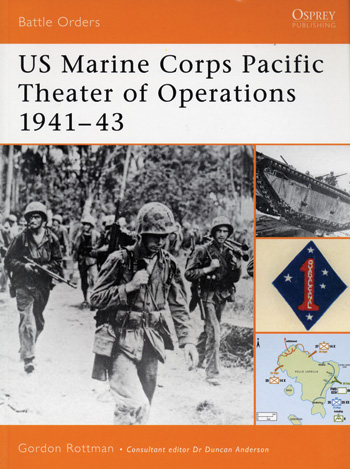 U.S. Marine Corps: Pacific Theater of Operations, 1941-43, by Gordon Rottman, Osprey Publishing, Oxford, UK, 2004, 96 pp., illustrations, maps, tables, chronology, bibliography, index, $21.95, softcover.
U.S. Marine Corps: Pacific Theater of Operations, 1941-43, by Gordon Rottman, Osprey Publishing, Oxford, UK, 2004, 96 pp., illustrations, maps, tables, chronology, bibliography, index, $21.95, softcover.
The U.S. Marine Corps, especially during World War II, served as an amphibious assault force. This study—containing excellent maps, organizational charts, tables, and photographs—focuses on the rapid expansion of the Marine Corps after the December 1941 declaration of war and its combat operations through the end of 1943. The units organized during this period were the 1st, 2nd, and 3rd Marine Divisions and the provisional 1st, 2nd, and 3rd Marine Brigades. The Marine Corps doctrine, training, and tactics, is described, as is unit force structure, weapons, and equipment. Command, control, communications, and intelligence facets of Marine Corps units and operations are also covered. Initial Marine Corps combat operations in the Pacific at Wake Island and Corregidor are chronicled, as is the savage fighting on Guadalcanal, New Georgia, and Bougainville. This volume provides an outstanding introduction to this interesting topic.
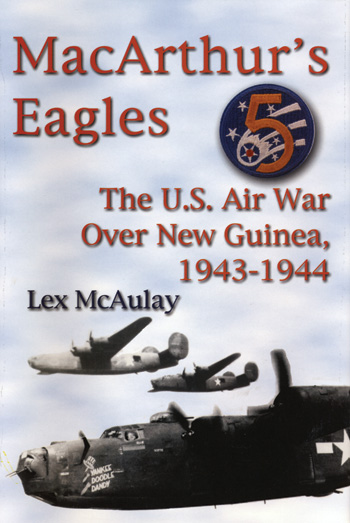 MacArthur’s Eagles: The U.S. Air War Over New Guinea, 1943-1944, by Lex McAuley, Naval Institute Press, Annapolis, MD, 2005, 349 pp., illustrations, maps, appendices, bibliography, index, $34.95, hardcover.
MacArthur’s Eagles: The U.S. Air War Over New Guinea, 1943-1944, by Lex McAuley, Naval Institute Press, Annapolis, MD, 2005, 349 pp., illustrations, maps, appendices, bibliography, index, $34.95, hardcover.
The American-Australian 5th Air Force, as shown in this well researched and detailed study, mastered the tactics and strategy of aerial warfare in the South West Pacific Area during World War II. Under the command of U.S. Army Lieutenant General George C. Kenney, the 5th Air Force was a component of and supported the island-hopping operations of General Douglas MacArthur’s forces. This book focuses on the air operations in New Guinea, against the Japanese 4th Air Army at Wewak field in August 1943 and March 1944 and against Hollandia in April 1944. Much more than a simple narrative, this book highlights the American and Japanese airpower doctrines and the impact of the respective aviation industries and attitudes on airplane development. It also includes the Japanese perspective on various air campaigns. Lex McAuley’s perceptive study deserves a place on every airpower enthusiast’s bookshelf.
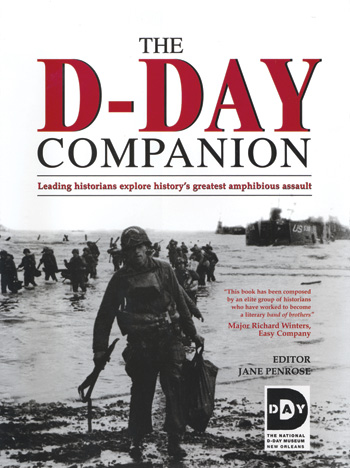 The D-Day Companion: Leading Historians Explore History’s Greatest Amphibious Assault, edited by Jane Penrose, Osprey Publishing, Oxford, UK, 2004, 288 pp., illustrations, maps, endnotes, bibliography, index, $29.95, hardcover.
The D-Day Companion: Leading Historians Explore History’s Greatest Amphibious Assault, edited by Jane Penrose, Osprey Publishing, Oxford, UK, 2004, 288 pp., illustrations, maps, endnotes, bibliography, index, $29.95, hardcover.
“The eyes of the world are upon you,” wrote General Dwight D. Eisenhower to Allied forces preparing to assault the Normandy beaches on D-Day, June 6, 1944, and “The hopes and prayers of liberty-loving people everywhere are with you.” In this superb anthology, published to coincide with the 60th anniversary of D-Day, the eyes of a dozen prominent military historians focus on and examine various aspects of this unparalleled military operation. Professor Samuel J. Newland places the Normandy campaign within the overall strategic context of the war, emphasizing the precondition of Allied air and naval superiority. The planning and logistical preparations for Operation Overlord are assessed by Dr. Duncan Anderson, and Dr. Christina J.M. Goulter chronicles the deception and intelligence aspects of the operation. Other essays focus on the Allied and German high commands; the aerial, airborne, and amphibious components of the operation; and other equally relevant topics. All historians, students, and enthusiasts of D-Day should own this outstanding book on Operation Overlord, “history’s greatest amphibious assault.”
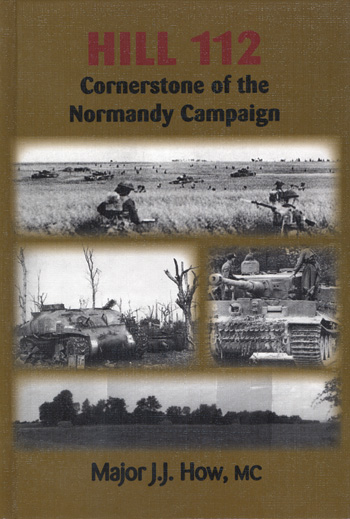 Hill 112, Cornerstone of the Normandy Campaign, by J.J. How, J.J. Fedorowicz Publishing, Winnipeg, Canada, 2004, 194 pp., illustrations, maps, source references, index, $35.00, hardcover.
Hill 112, Cornerstone of the Normandy Campaign, by J.J. How, J.J. Fedorowicz Publishing, Winnipeg, Canada, 2004, 194 pp., illustrations, maps, source references, index, $35.00, hardcover.
Caen, a key road and rail center on the boundary of the two German armies defending northern France, was an important objective of the British after the Normandy landings. The British made numerous attempts to capture Caen, notably during Operations Epsom and Goodwood, but they were generally repulsed after ferocious tank battles. It was later realized that a key to seizing Caen was the occupation of nearby Hill 112. The exhausting struggle for this high ground is depicted in considerable detail, highlighting the gallant actions of individual soldiers, leaders, and small units, both British and German. Author Major J.J. How brings a sense of immediacy, realism, and balance to this account, as he fought at Hill 112 with his battalion, and conducted extensive postwar research on the Normandy campaign. Hill 112 was abandoned by the Germans in early August 1944, and the Normandy campaign ended only weeks later. “That little wood on Hill 112,” concludes How, “stretching splintered and shattered tree trunks gauntly into the sky, was as forlorn and dangerous a battlefield as North-West Europe was to see.”
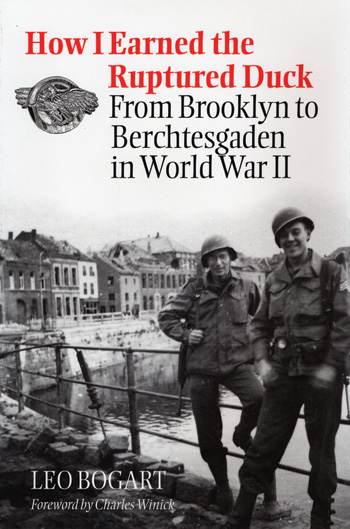 How I Earned the Ruptured Duck: From Brooklyn to Berchtesgaden in World War II, by Leo Bogart, Texas A&M University Press, College Station, 2004, 149 pp., illustrations, maps, notes, index, $29.95, hardcover.
How I Earned the Ruptured Duck: From Brooklyn to Berchtesgaden in World War II, by Leo Bogart, Texas A&M University Press, College Station, 2004, 149 pp., illustrations, maps, notes, index, $29.95, hardcover.
The “ruptured duck” was the nickname of the gilt lapel pin featuring a stylized head of an eagle awarded to honorably discharged veterans of World War II. This interesting and eye-opening book is Leo Bogart’s memoir of his Second World War experiences, and it is no ordinary tale. Bogart, the son of German- and Russian-speaking immigrants, was born in 1921. He graduated from Brooklyn College in 1941 and worked for a company that made radio components for Russia via the Lend-Lease program. As a result, he was better educated and more mature with a greater political awareness than most young solders. He trained at Fort Dix, New Jersey, and Camp Crowder, Missouri, before being sent to study German at Vanderbilt University. Not unexpectedly, Bogart was assigned to a signals intelligence unit attached to the 19th Tactical Air Command supporting the Ninth Army. Its mission was “to provide intelligence on German air activity, by listening in on the Luftwaffe’s radio communications.” The unit deployed to Europe in September 1944, and Bogart had frequent adventures and opportunities to travel and mingle with the local populace unimaginable to line soldiers. This account is a series of Bogart’s wartime letters supplemented by retrospective comments and assessments in bold-face type. This is a very different, intriguing story from a World War II soldier, and it deserves a wide readership.
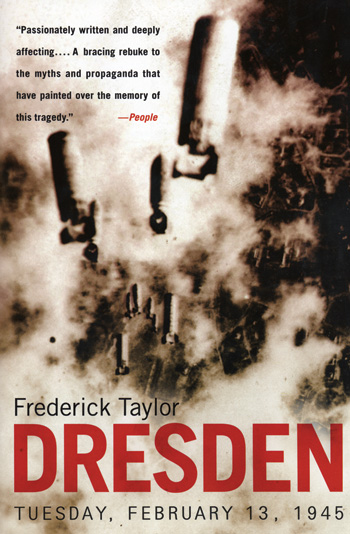 Dresden, Tuesday, February 13, 1945, by Frederick Taylor, Perennial, New York, 2005, 518 pp., illustrations, maps, appendices, endnotes, source and bibliography, index, $15.95, softcover.
Dresden, Tuesday, February 13, 1945, by Frederick Taylor, Perennial, New York, 2005, 518 pp., illustrations, maps, appendices, endnotes, source and bibliography, index, $15.95, softcover.
For decades, the Allied bombing of Dresden, Germany, on February 13, 1945, has been frequently depicted as “a senseless crime” and “the unforgivable thing our fathers did in the name of freedom and humanity, … to destroy a beautiful and, above all, innocent European city.” In this compelling study, British historian Frederick Taylor has reexamined this notorious wartime incident. He conducted extensive research in military records and archives in Germany, England, and the United States, and extracted haunting and poignant reminiscences from survivors, observers, and participants in the bombing. Taylor dissects and discards Nazi propaganda and postwar Communist fabrications that vilified the Allied bombing of Dresden and multiplied at least tenfold the number of civilian casualties in it. The author musters the evidence and concludes that Dresden—the “Florence of the Elbe”—was a “legitimate military target.” At the time, Dresden was a key rail junction 60 miles behind the approaching Russian front. Moreover, Dresden contained the second largest military garrison in Germany, as well as at least 127 factories producing military armaments. In this well crafted and riveting book, Taylor shows conclusively (but is not the first historian to do so) that the bombing of Dresden was justified in a world war.
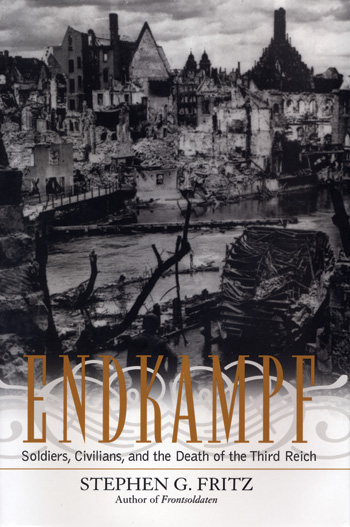 Endkampf: Soldiers, Civilians, and the Death of the Third Reich, by Stephen G. Fritz, University Press of Kentucky, Lexington, 2004, 416 pp., illustrations, maps, notes, bibliography, index, $35.00, hardcover.
Endkampf: Soldiers, Civilians, and the Death of the Third Reich, by Stephen G. Fritz, University Press of Kentucky, Lexington, 2004, 416 pp., illustrations, maps, notes, bibliography, index, $35.00, hardcover.
With imminent military defeat looming on the horizon in late 1944, leaders of Nazi Germany sought “to create an effective Werwolf (Nazi guerrilla) movement, both to promote guerrilla war as well as guarantee the survival of Nazi ideology.” After the surprise German counterattack in the Ardennes, Allied intelligence reexamined indicators that the German Army might withdraw to the formidable terrain of the Alpenfestung (Alpine Fortress, or national redoubt) and prolong resistance or fight a desperate Wagnerian battle to the death. The Alpine Fortress concept influenced Allied strategy, as Supreme Commander General Dwight D. Eisenhower diverted forces advancing on Berlin to the south and southeast to disrupt the German ability to consolidate forces in the mountains. Six U.S. Army divisions advanced into Franconia to capture the symbolic city Nuremberg. Hastily organized and frequently zealous German troops defended a 60-mile swath of Middle Franconia. The result, as chronicled in detail by author Stephen G. Fritz, was surprisingly intense fighting in a swirling maelstrom of chaos and combat. This thoroughly researched and superbly written study illuminates the impact of Nazism on German resistance in the little known campaign in Franconia.
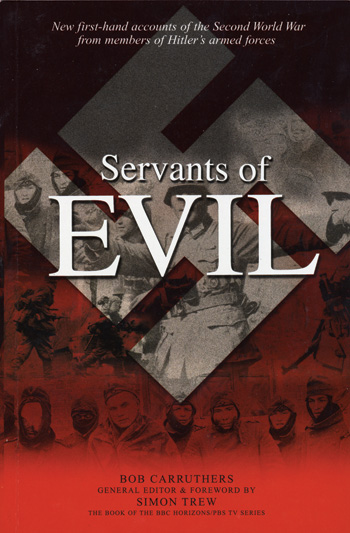 Servants of Evil: New First-Hand Accounts of the Second World War from Survivors of Hitler’s Armed Forces, edited by Bob Carruthers, Zenith Press, St. Paul, MN, 2005, 270 pp., illustrations, bibliography, index, $19.95, softcover.
Servants of Evil: New First-Hand Accounts of the Second World War from Survivors of Hitler’s Armed Forces, edited by Bob Carruthers, Zenith Press, St. Paul, MN, 2005, 270 pp., illustrations, bibliography, index, $19.95, softcover.
While a number of senior German military commanders of World War II, including Manstein, Guderian, Skorzeny, Warlimont, and Gehlen, published their memoirs after the war, it seems that very few “ordinary” German soldiers produced their own combat accounts. This may be due to the dishonor of defeat, self-pity, painful memories, and the stigma of having serving the “evil” Nazi regime. This book, based upon a British television series, contains the recent recollections of German World War II veterans interwoven into an overall narrative of the war. There are eight chapters in this volume, beginning with “The Blitzkrieg Era, 1939-1941,” and followed by “The Germans in Russia.” Two chapters each chronicle U-boat and Luftwaffe operations, before “The Closing Battles: From Stalingrad to Berlin, 1943-1945,” and “Prisoners.” These recent accounts, however, are frequently tinged with reflection, hindsight, and remorse, and arguably do not possess the immediacy or veracity of contemporary letters, documents, or interviews. It is nonetheless important to know and understand the German soldiers’ perspective of World War II.
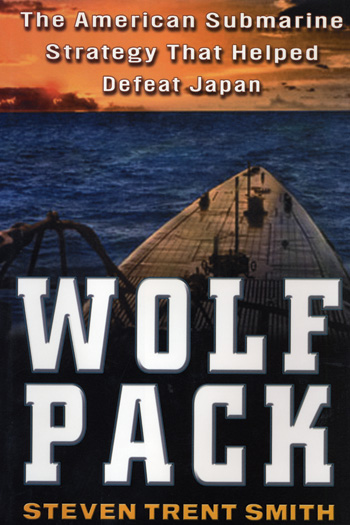 Wolf Pack: The American Submarine Strategy That Helped Defeat Japan, by Steven Trent Smith, Wiley, New York, 2003, 312 pp., illustrations, maps, appendix, notes, bibliography, index, $27.95, hardcover.
Wolf Pack: The American Submarine Strategy That Helped Defeat Japan, by Steven Trent Smith, Wiley, New York, 2003, 312 pp., illustrations, maps, appendix, notes, bibliography, index, $27.95, hardcover.
The “wolf pack” was the feared formation of deadly submarines lurking below the waves to pounce on its vulnerable surface prey. This tactic, in which the attacks of multiple submarines were concentrated and coordinated on a single target or convoy, was developed by the Germans during World War I. The U.S. Navy began copying this tactic in the Pacific in 1943. Subsequent submarine patrols, as chronicled by photojournalist Steven Trent Smith, became more effective in destroying their Japanese targets. American submarine missions culminated in Operation “Barney” in June 1945. Nine U.S. submarines infiltrated the Sea of Japan and “for several days they had brought shipping to its knees.” Even though one U.S. submarine, Bonefish, was lost, 28 Japanese vessels and many smaller boats were sunk. While the author’s overall claims of the effectiveness of U.S. submarine warfare in the Pacific may seem exaggerated, this fast paced narrative with lengthy reconstructed conversations should appeal to naval enthusiasts.
 The Enola Gay and the Smithsonian Institute, by Charles T. O’Reilly and William A. Rooney, McFarland, Jefferson, NC, 2005, 255 pp., appendices, notes, bibliography, index, $39.95, softcover.
The Enola Gay and the Smithsonian Institute, by Charles T. O’Reilly and William A. Rooney, McFarland, Jefferson, NC, 2005, 255 pp., appendices, notes, bibliography, index, $39.95, softcover.
The Enola Gay was the B-29 bomber that dropped the atomic bomb on Hiroshima, Japan, on August 6, 1945. This cataclysmic event hastened the end of World War II and ushered in the nuclear age. The National Air and Space Museum (NASM) of the Smithsonian Institute planned to produce an exhibit, centered on the refurbished Enola Gay, to coincide with the 50th anniversary of the end of the Second World War. The planned exhibit quickly became embroiled in controversy, which the NASM downplayed as “a debate between nostalgic veterans and authentic historians.” Authors and World War II veterans Charles T. O’Reilly and William A. Rooney show convincingly in this superbly reasoned and well written study that this “debate” was much more substantive. The version of history the NASM wanted to present was of a revisionist, biased, and speculative American “racist war of vengeance.” Issues raised during this episode (among others) included “whether Japan was on the brink of surrender in the summer of 1945, whether American racism led to Hiroshima and Nagasaki, and whether President Truman lied about the number of casualties expected if there was an invasion of Japan.” Under considerable pressure, the NASM cancelled this outrageous exhibit. It was, as documented in this important book, political correctness run amok and a gross misrepresentation of World War II history.
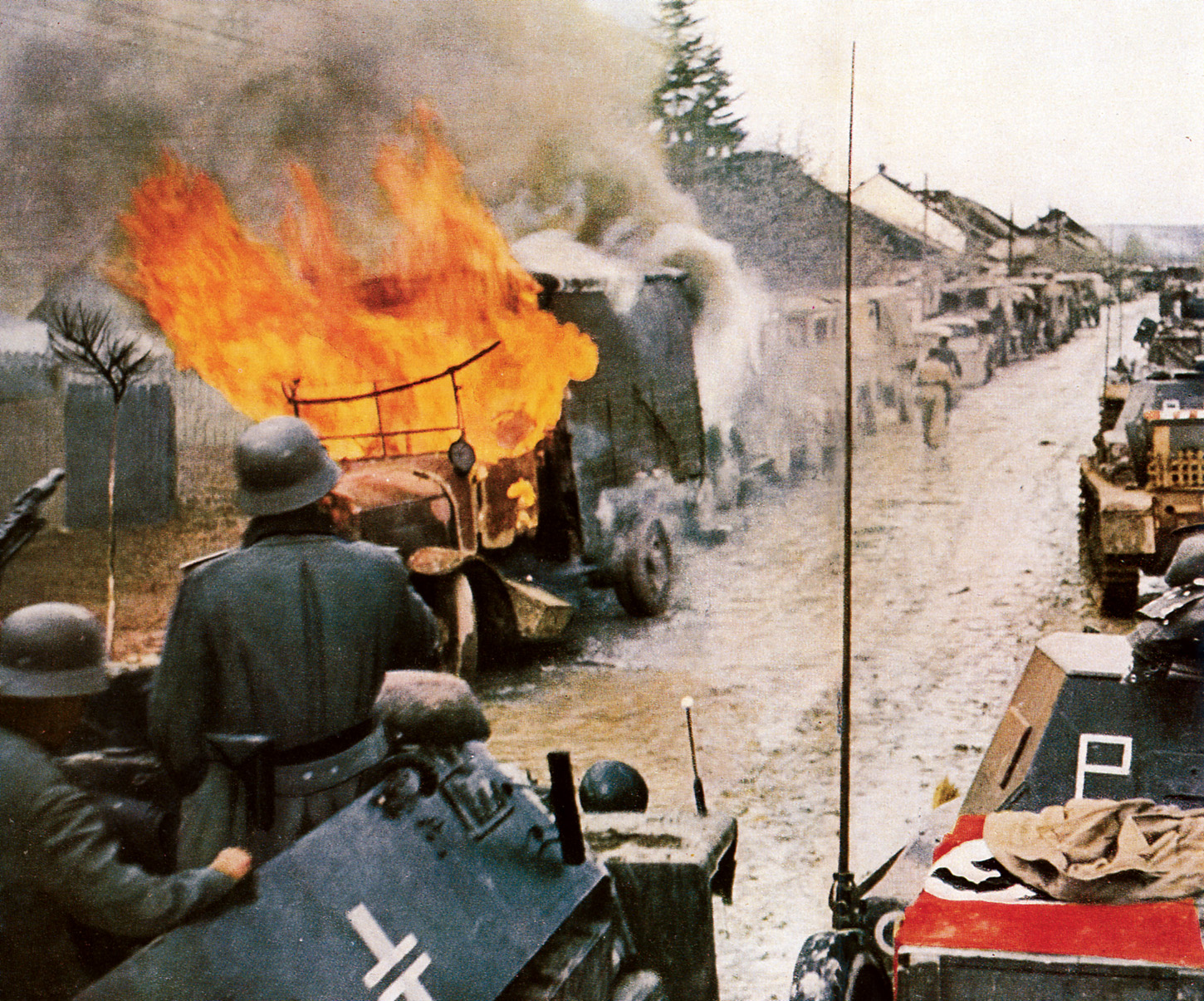
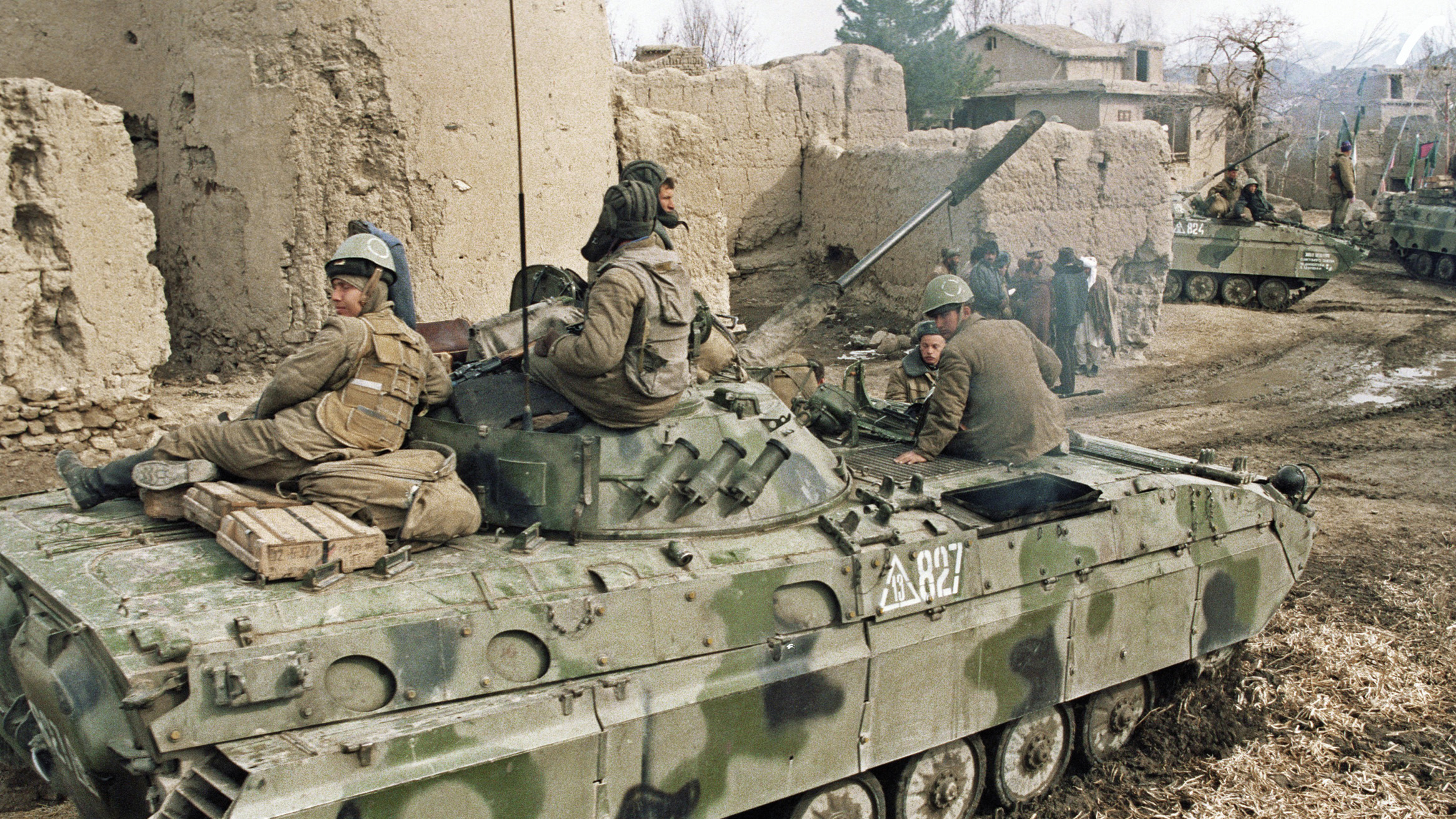
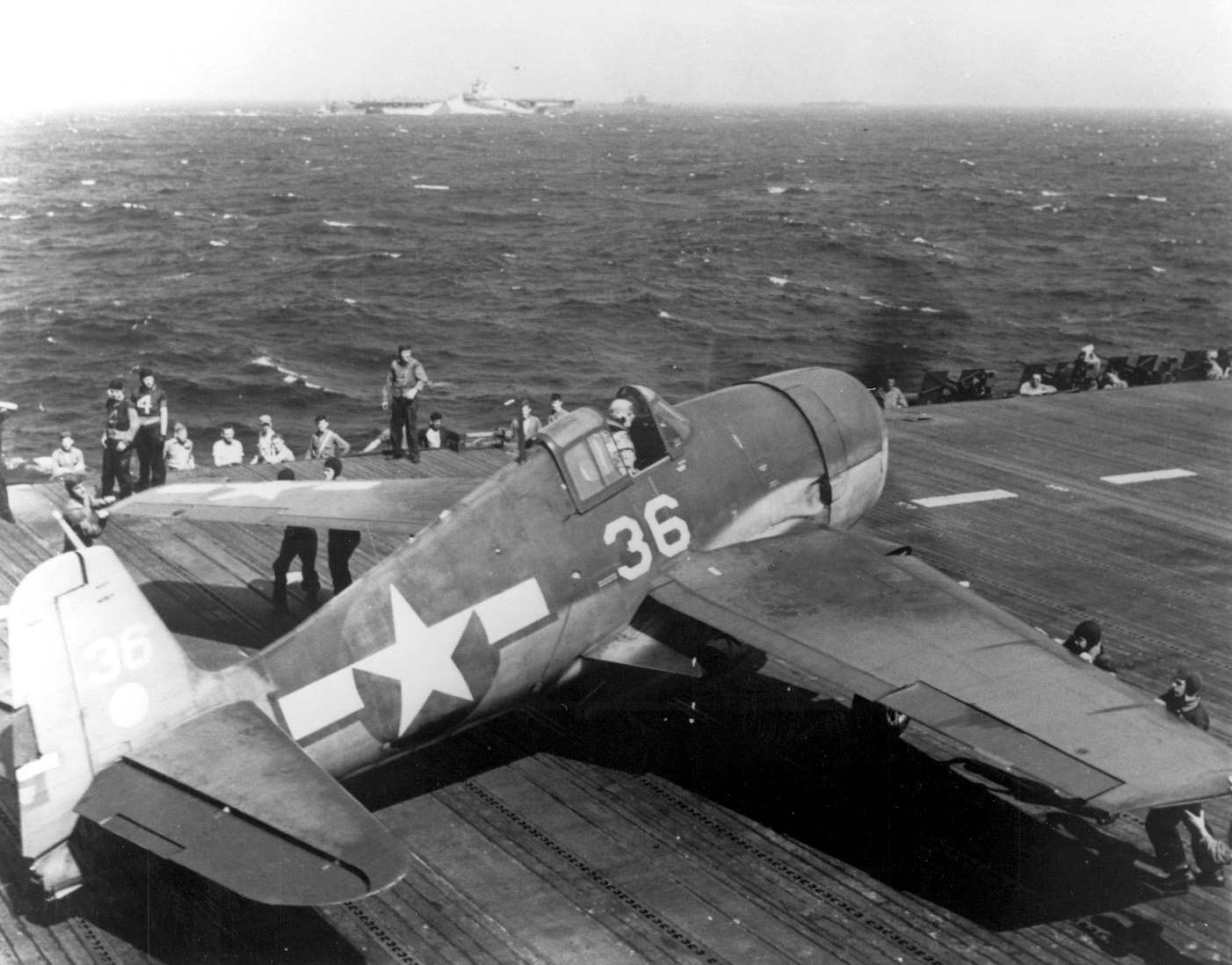
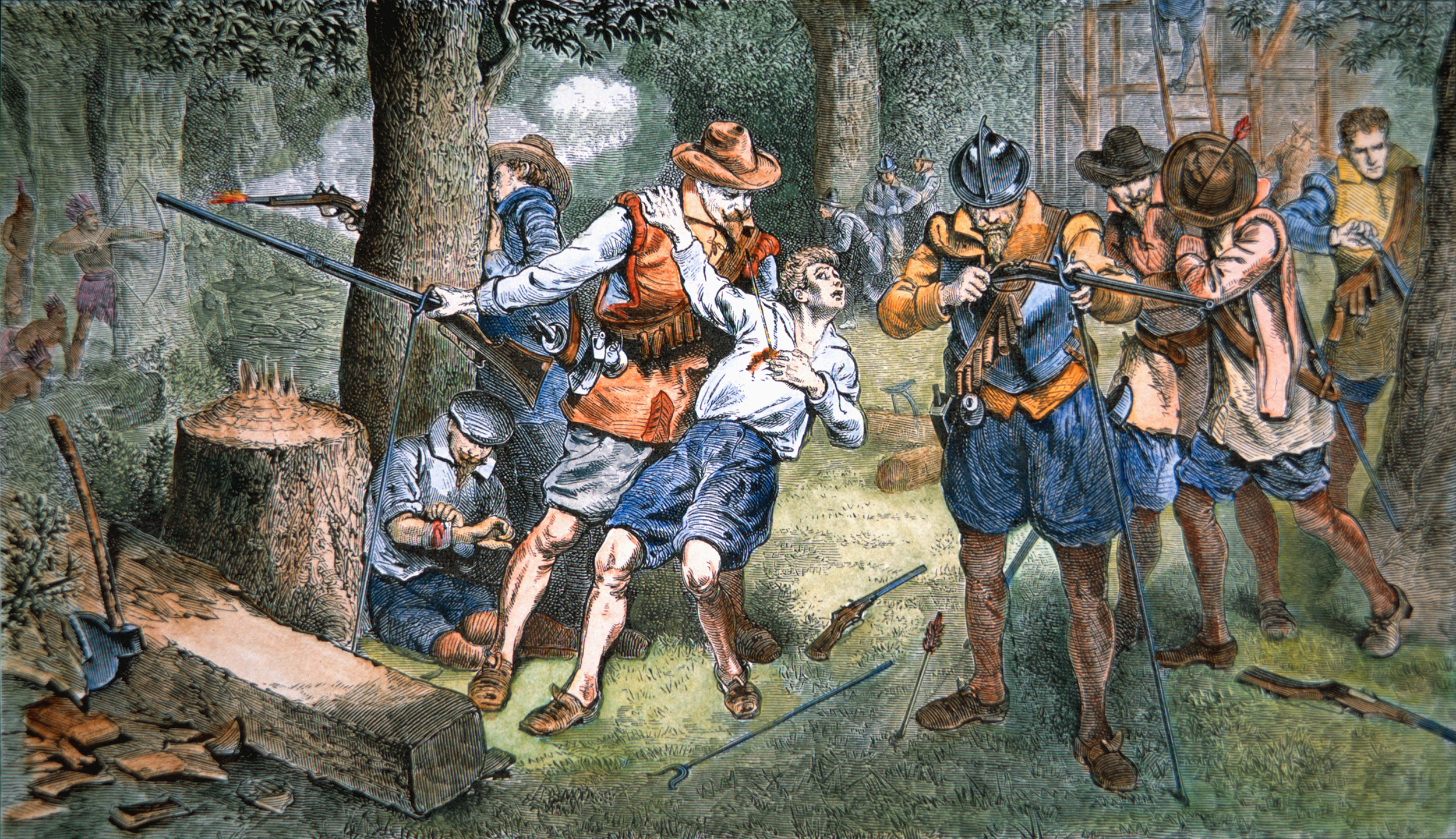
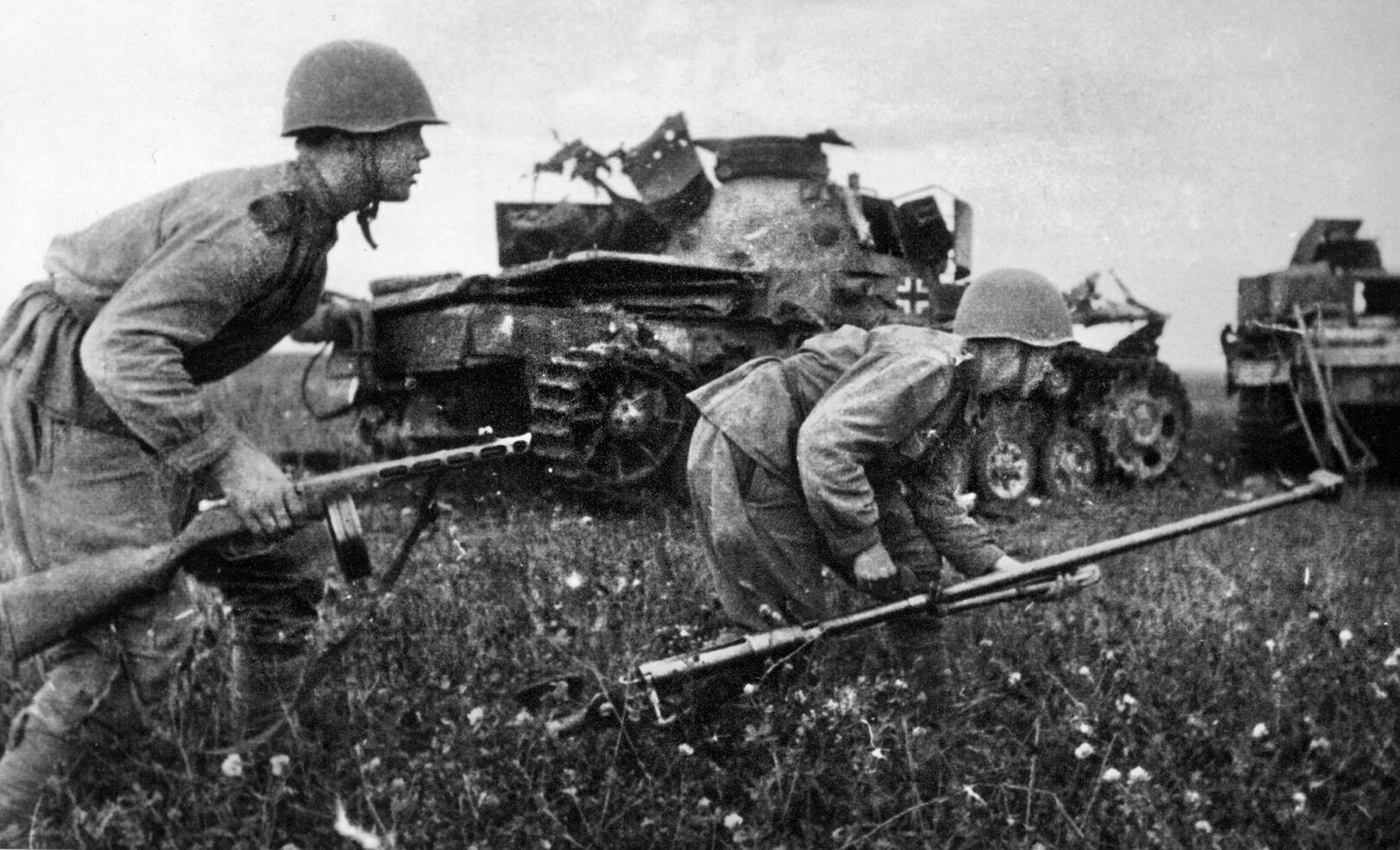
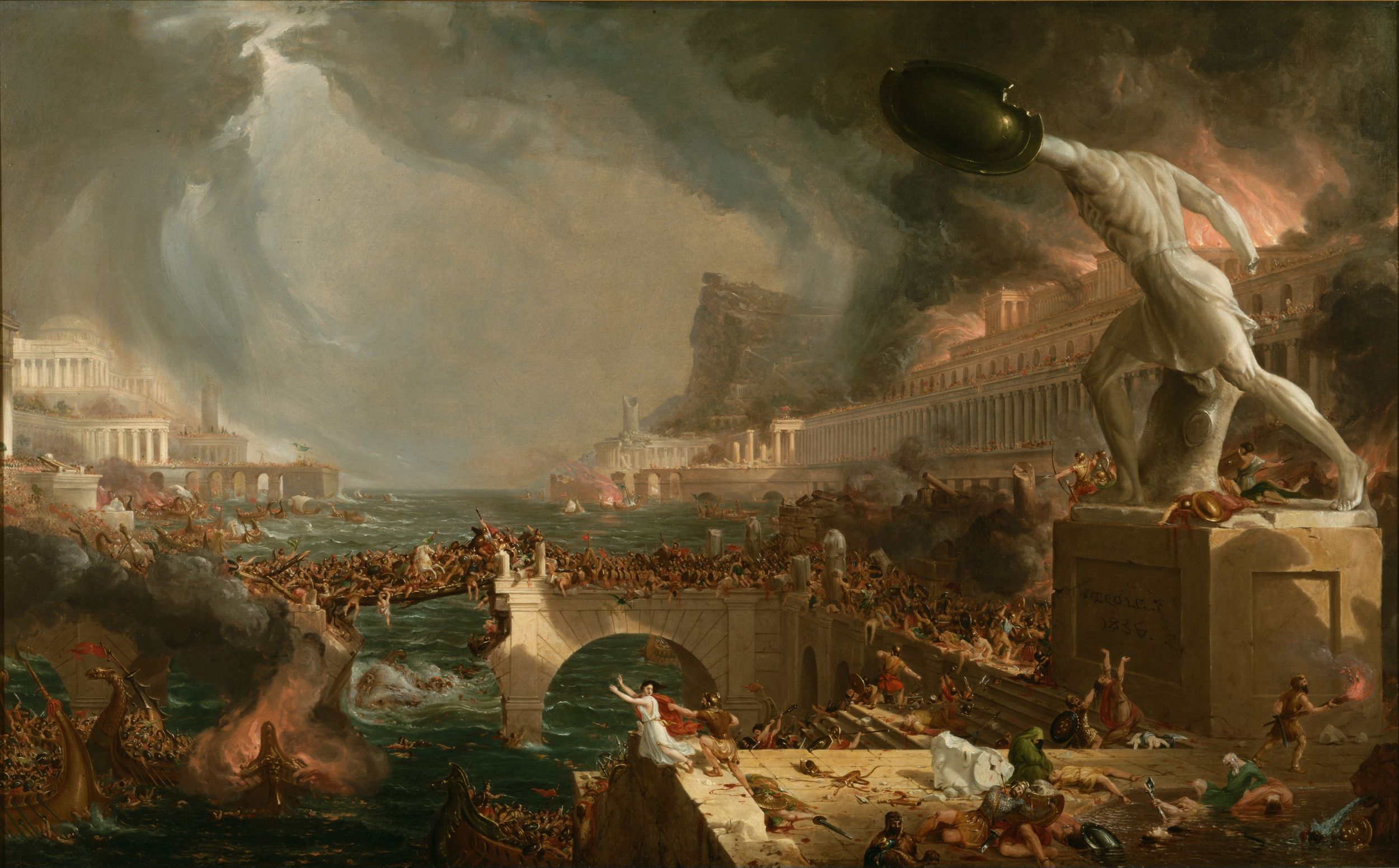
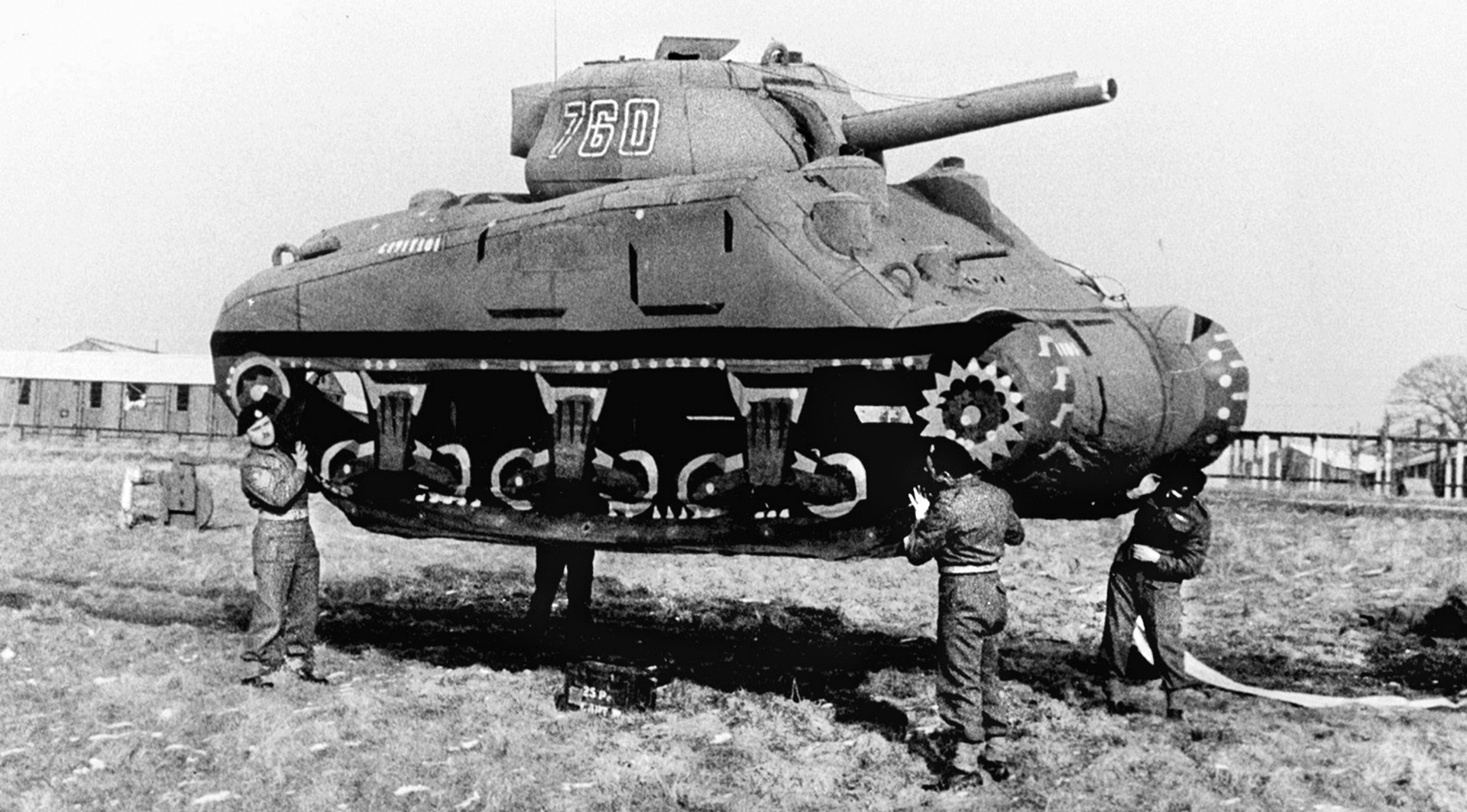
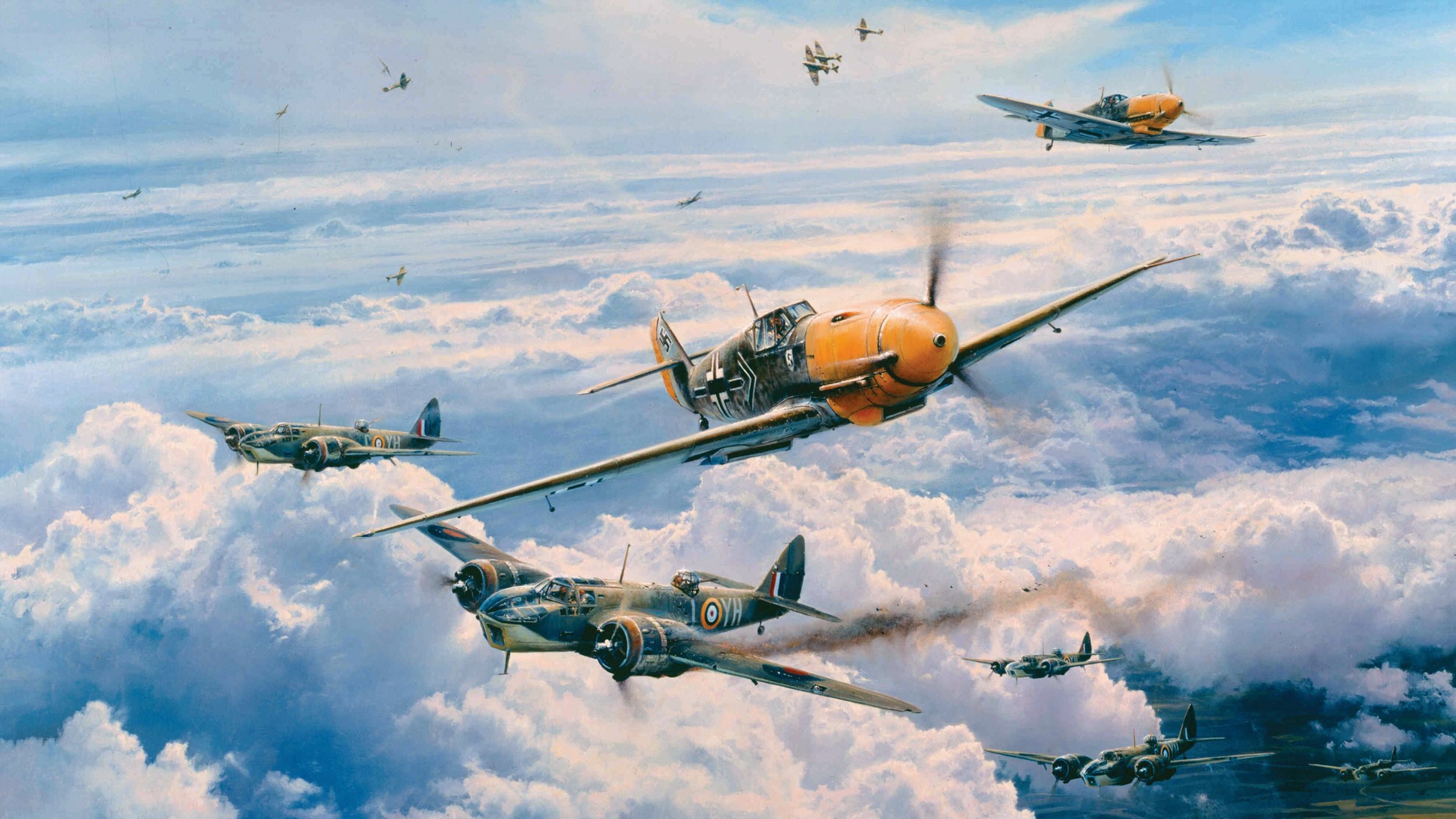
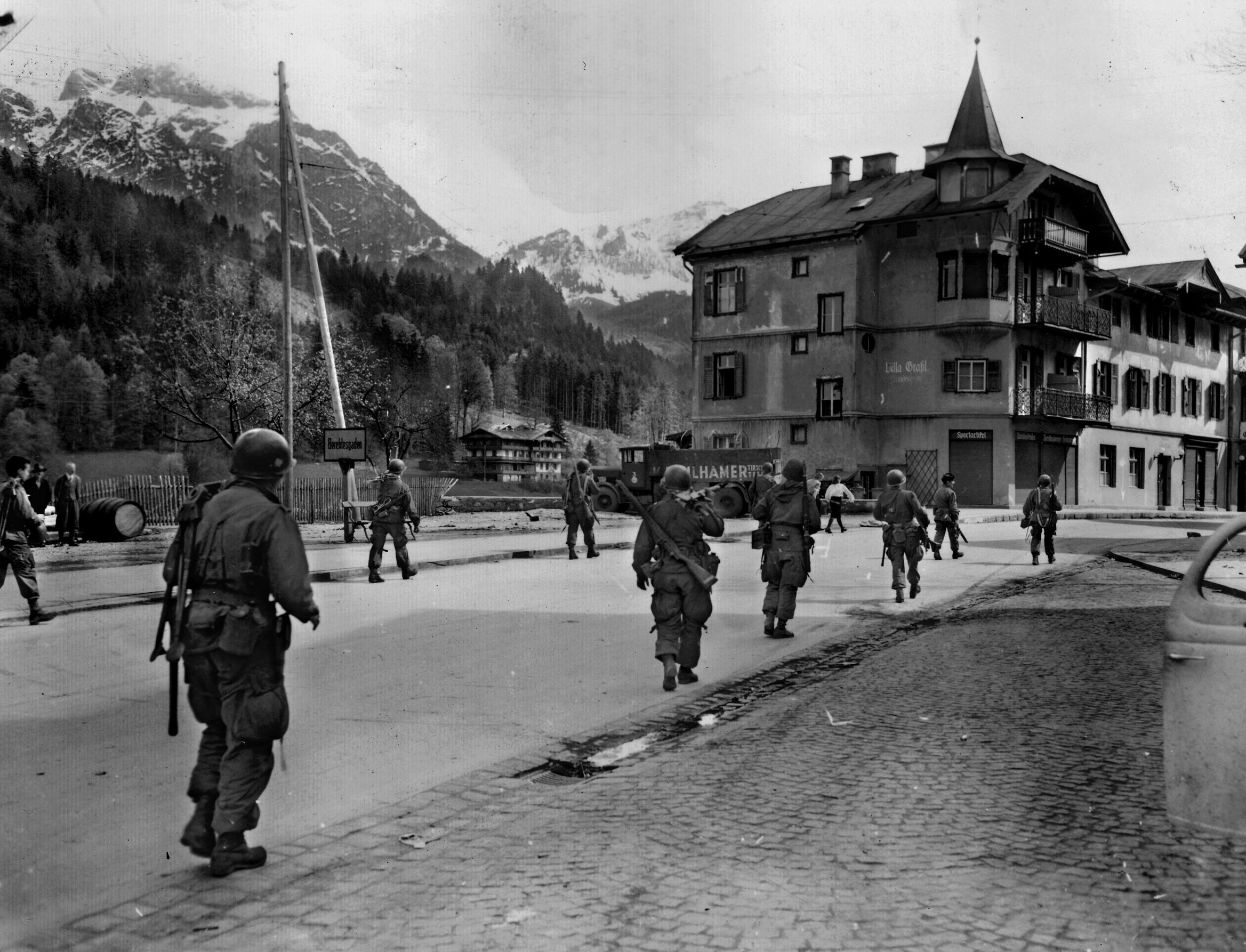
Join The Conversation
Comments
View All Comments